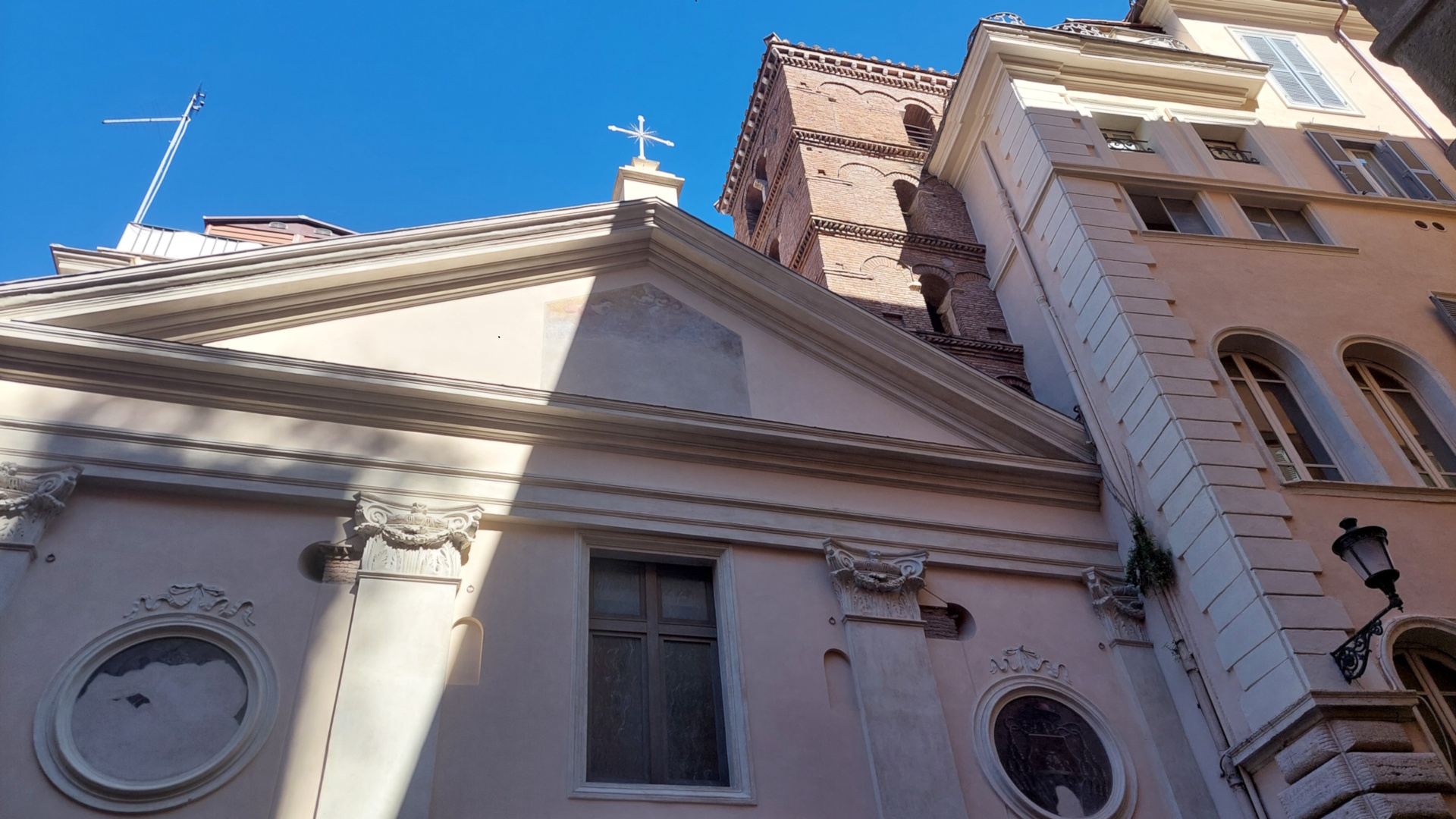
By casually entering the church, you might perhaps be surprised to discover that an iconostasis (a symbol of the distinction between heaven and earth) separates the sanctuary from the nave and that the liturgy follows the Eastern rite. For more than a hundred years, San Salvatore alle Coppelle has in fact been the meeting point of the Romanian Greek Catholic community, as well as being the national church of Romania.
However, the church with a simple single-storey façade you can admire walking through the streets of the Rione Sant’Eustachio, halfway between Piazza Navona and Via del Corso, boasts much older origins. Tradition has it that it was built over the house of the Roman noblewoman Abbasia, who had left her property to charity. Historically proven is its consecration or re-consecration by Pope Celestine III, in 1195: the dedicatory plaque preserved inside and the small Romanesque bell tower, now partly incorporated into the neighboring building, date back to this period. In a bull issued by Honorius III in 1222, the church is called “de Cupellis”, a name that is generally related to the presence of the workshops of makers of small barrels (“cupella” or “coppella).
In 1404, a guild for goldsmiths, blacksmiths and saddlers (Università degli Orefici, Ferrari e Sellari) was founded at the church. However, the guild split up within a few years: the goldsmiths ended up at Sant’Eligio degli Orefici and the blacksmiths at Sant’Eligio dei Ferrari, while the saddlers remained here for another three centuries, until 1740, when they decided to build their own church (Sant’Eligio dei Sellai, demolished in 1902). From 1663, however, the church was also the seat of the Confraternity of the Blessed Sacrament of Divine Perseverance, which had been established to aid foreigners and pilgrims who fell ill in Rome. On the left-hand side of the church, a still visible plaque in the shape of a letterbox requested local innkeepers to inform the Confraternity of any sick guest needing assistance. The text reads: “QUI DEVONO METTERE I VIGLIETTI TUTTI GLI OSTI ALBERGATORI LOCANDIERI ED ALTRI PER DARE NOTIZIA DE’ FORESTIERI CHE SI INFERMANO NELLE LORO CASE” (here shall all householders, innkeepers and others put their notes to report cases of illness in their homes).
This particular post box dates back to the Jubilee of 1750. The greater influx of pilgrims probably made the problem of protecting visitors and controlling possible outbreaks of epidemics more pressing. In the meantime, the mediaeval church had undergone a radical transformation. It had been rebuilt in time for the Holy Year to a design by Carlo De Dominicis, who also designed the façade of the church of Santi Bartolomeo e Alessandro dei Bergamaschi in Rome. The sponsor of the work was Cardinal Giorgio Spinola, who is buried in one of the chapels. In addition to the spectacular polychrome marble funeral monument for the cardinal, the work of Bernardino Ludovisi, the church preserves two 15th-century fresco fragments (a “Dormitio Virginis” and a “Virgin with Jesus on her knees” by the school of Antoniazzo Romano). The interior, with three naves, was originally divided by marble columns, which were replaced at the end of the 18th century by the current brick piers.
Information
For the timetable of the masses and visiting conditions, please consult the contacts.
 Condividi
Condividi
Location
To find out about all accessibility services, visit the Rome accessible section.











































